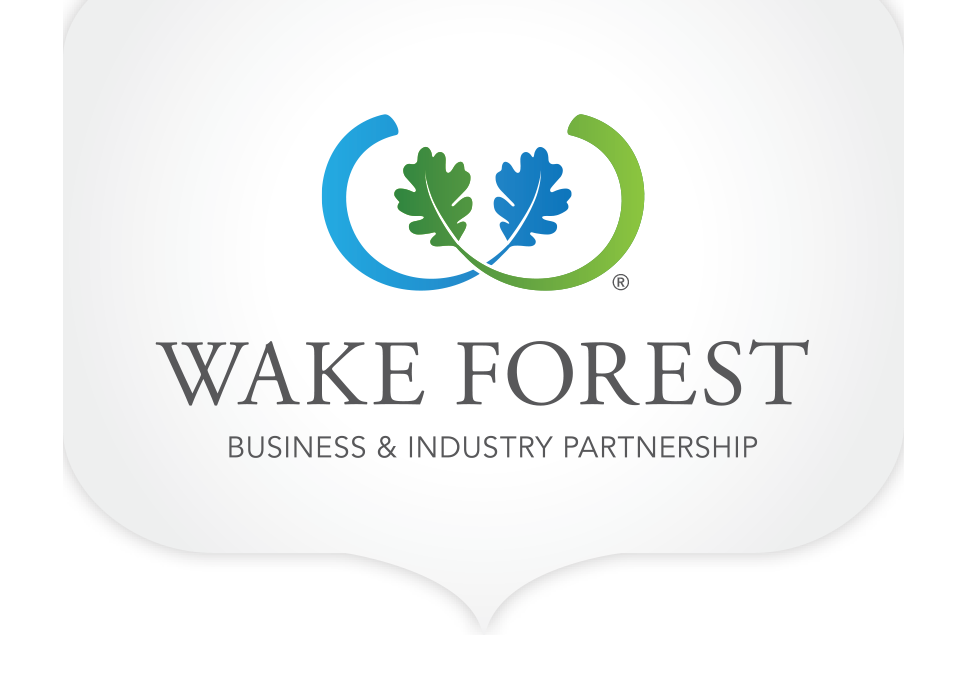Railroads revolutionized U.S. commerce in the 1830s, transforming a sparsely settled continent into a global economic power less than a century later. Today, even as digital technologies close the gap between companies, communities, and consumers, rail travel still has the potential to advance economic development, tourism activity, and quality of life.
A $1.1 billion federal grant to the N.C. Department of Transportation is now set to return passenger train service to Wake Forest, connecting the town to the state’s major business destinations and ultimately serving as a modern link in the flow of goods and people from the southeastern U.S. to Washington, DC.
“It’s going to be a great benefit for the citizens of this community,” says Wake Forest Mayor Vivian A. Jones, who in mid-December joined Governor Roy Cooper, U.S. Transportation Secretary Pete Buttigieg, and other leaders in announcing the important award. “It’s going to help make Downtown Wake Forest a major destination for people.”
The funds will be applied to infrastructure upgrades needed to establish high-speed rail service from Raleigh’s Union Station to a yet-to-be-selected depot in Wake Forest. Modernizing the 18-mile corridor is expected to take about seven years. While the idea has been discussed and formally studied for years, the federal funds – along with NCDOT placing the project among its highest priorities – ensure the wheels will finally be set into motion.
The first step involves the state’s purchase of tracks now owned by CSX. The Florida-based railroad currently uses the corridor for a modest measure of daily industrial traffic. That will continue under a new agreement between the company and NCDOT. “When that is finished, they will start immediately on the infrastructure work,” Mayor Jones says.
The Raleigh to Wake Forest corridor will ultimately restore passenger and industrial service between Raleigh and Richmond, Va., a historic link that began around 1900 under Seaboard Air Line Railroad. But as America’s love affair with the automobile set in, rail travel fell from favor, and passenger service through Wake Forest was discontinued in the 1960s. Industrial rail traffic from Raleigh to Richmond has since been routed through Rocky Mount, adding time and mileage to the journey.
Returning the corridor to operation is part of an initiative known as the “S-Line Rail Project” (a salute to “Seaboard”). This time, however, 21st-century infrastructure will enable safer, faster, and more convenient travel. Federal funds will be applied to engineering design, right-of-way purchases, track upgrades, and replacement of old-style crossings with a seamless series of highway and rail overpasses. Planning includes a multi-modal station in Wake Forest that will likely be owned and maintained by NCDOT.
“They’ve already done a study of three different places in Wake Forest that could be possible stations,” Mayor Jones continues. The town will get only one stop, and her preference is for that stop to be Downtown. “There would be some challenges to having a station Downtown,” she admits, “but I think it would be the best thing for the town.”
Mayor Jones and other town officials have worked closely with DOT partners in moving the vision forward, a collaboration that will no doubt continue. “It’s going to take a lot of working and planning, and we have started that process already,” she says.
Wake Forest was one of seven central North Carolina municipalities to partner with NCDOT in an extensive study of regional transit needs. Those efforts, completed last year, looked at real estate trends, workforce housing needs, economic development opportunities, and livability issues. “The Town of Wake Forest has been a great partner in developing the transformational S-line project, and NCDOT is excited to begin this next phase with the community,” says Jason Orthner, Director of NCDOT’s Rail Division. “The Town’s leadership understands the importance of intercity rail as part of a multi-modal transportation system that provides mobility for its citizens and drives economic development.”
As the Raleigh-to-Wake Forest link is modernized, the most immediate opportunity involves extending The Piedmont to the town. That 173-mile service, owned and subsidized by the state while operated by Amtrak, makes three daily round trips from Charlotte to Raleigh. State leaders launched The Piedmont in 1995, and the route also includes seven other North Carolina municipalities. It has since become a popular choice for recreational and business travelers, and even daily commuters. Mayor Jones says becoming a stop for The Piedmont will showcase “all the neat things we have going on in our Downtown.”
In the longer term, the S-Line will extend into southern Virginia and include stops in Youngsville, Franklinton, Henderson, and Norlina. That part of the project involves a partnership between the N.C. Department of Transportation and the Virginia Rail Passenger Authority. Existing industrial service over the corridor will not be disrupted during the upgrade process, DOT officials say.
“Last month’s announcement of the S-Line upgrades and the extension of The Piedmont service to Wake Forest is among the most exciting strategic developments I’ve seen during my tenure here,” says Jason Cannon, President of the Wake Forest Business & Industry Partnership (WFBIP). “Connectivity is so important in today’s economy, and passenger rail service three times a day will further distinguish our town from other Triangle suburbs.”
But the measure also has broader implications for the local economy. More efficient industrial rail connections will boost supply-chain reliability, which gives manufacturers and logistics providers another reason to consider Wake Forest as a business destination. “From any angle you choose to see this project, it’s going to mark a seismic shift in the terrain of our town’s economy,” Cannon says. “It’s going to have a generational impact.”




